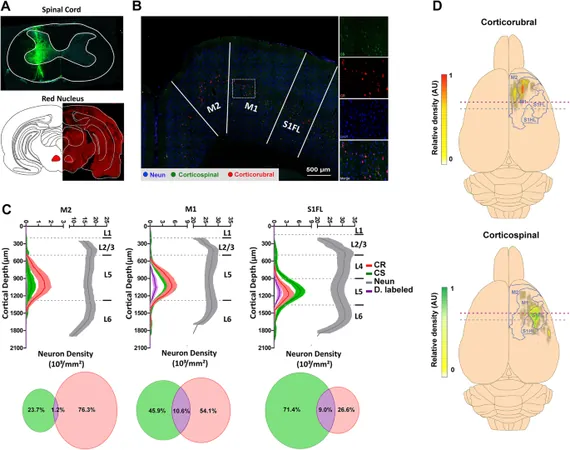
Unlocking the Power of Supercapacitors: How High-Energy X-Ray Irradiation Transforms Ni(OH)₂
2025-08-09
Author: Nur
Revolutionizing Supercapacitor Technology
Researchers have made a groundbreaking discovery in enhancing the performance of supercapacitors by applying high-energy X-ray irradiation to nickel hydroxide (Ni(OH)₂). This innovative approach not only modifies the material’s structure but also boosts its electrochemical efficiency, making it an exciting prospect for future energy storage systems.
Unveiling the Structural Changes
The first step in this transformative process involved analyzing the structural integrity and surface modifications of Ni(OH)₂ using X-ray diffraction (XRD) analysis. By comparing the patterns of pristine and irradiated samples, researchers confirmed that both retained their layered hydroxide structure, characterized by distinct diffraction peaks. The broad features near lower angles suggest some structural disorder, hinting at the remarkable transformations that took place without compromising the overall crystalline framework.
Chemical Insights from Spectroscopic Analysis
Further insights came from Raman and FTIR spectroscopy, revealing that the X-ray irradiation introduced new vibrational bands. Notably, a peak around 2850 cm⁻¹ emerged in the irradiated sample, indicating that chemical rearrangements occurred, creating additional active sites that enhance electrochemical reactions.
Electrochemical Performance that Astounds
Electrochemical tests revealed striking differences in performance between the pristine and irradiated Ni(OH)₂ electrodes. The X-ray-treated electrodes exhibited higher current densities and broader, more symmetrical cyclic voltammetry (CV) curves, demonstrating their superior charge storage capabilities. At a scan rate of 1 mV/s, the modified electrodes achieved a specific capacitance of 671.2 mF/cm², a substantial 41% increase over their untreated counterparts.
Enhanced Charge Storage Through Structural Modification
The study highlights that high-energy X-ray irradiation not only improves surface chemistry but also enhances ionic transport, thereby allowing for faster electron transfer during electrochemical reactions. This is crucial for applications requiring rapid charge-discharge cycles.
Breaking Down Barriers: Internal Resistance and Stability
Further analysis using Galvanostatic Charge-Discharge (GCD) and Electrochemical Impedance Spectroscopy (EIS) confirmed the improvements in internal resistance and charge transfer kinetics. The irradiated electrodes exhibited longer discharge times and a significant reduction in resistance, showcasing their potential for high-rate applications.
Unprecedented Durability in Cyclic Stability Tests
Remarkably, the X-ray irradiated Ni(OH)₂ maintained an impressive 99.2% capacitance retention after 5,000 cycles, largely surpassing the 96.3% retention of pristine electrodes. This exceptional stability marks a pivotal change in the commercial viability of Ni(OH)₂ for supercapacitor applications.
A Bright Future for Energy Storage
The findings position high-energy X-ray irradiation as a revolutionary technique for enhancing the electrochemical performance of Ni(OH)₂, paving the way for the development of more efficient, durable, and reliable supercapacitors. As energy storage demands grow, this innovative research opens new doors for advanced energy systems capable of meeting modern needs.



 Brasil (PT)
Brasil (PT)
 Canada (EN)
Canada (EN)
 Chile (ES)
Chile (ES)
 Česko (CS)
Česko (CS)
 대한민국 (KO)
대한민국 (KO)
 España (ES)
España (ES)
 France (FR)
France (FR)
 Hong Kong (EN)
Hong Kong (EN)
 Italia (IT)
Italia (IT)
 日本 (JA)
日本 (JA)
 Magyarország (HU)
Magyarország (HU)
 Norge (NO)
Norge (NO)
 Polska (PL)
Polska (PL)
 Schweiz (DE)
Schweiz (DE)
 Singapore (EN)
Singapore (EN)
 Sverige (SV)
Sverige (SV)
 Suomi (FI)
Suomi (FI)
 Türkiye (TR)
Türkiye (TR)
 الإمارات العربية المتحدة (AR)
الإمارات العربية المتحدة (AR)